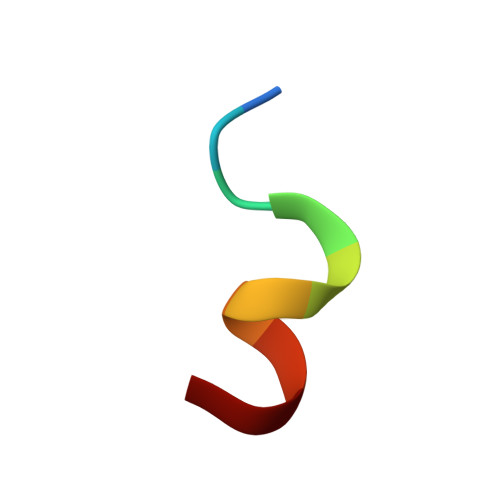A bacteriophage transcription regulator inhibits bacterial transcription initiation by sigma-factor displacement.
Liu, B., Shadrin, A., Sheppard, C., Mekler, V., Xu, Y., Severinov, K., Matthews, S., Wigneshweraraj, S.(2014) Nucleic Acids Res 42: 4294-4305
- PubMed: 24482445
- DOI: https://doi.org/10.1093/nar/gku080
- Primary Citation of Related Structures:
2MC5, 2MC6 - PubMed Abstract:
Bacteriophages (phages) appropriate essential processes of bacterial hosts to benefit their own development. The multisubunit bacterial RNA polymerase (RNAp) enzyme, which catalyses DNA transcription, is targeted by phage-encoded transcription regulators that selectively modulate its activity. Here, we describe the structural and mechanistic basis for the inhibition of bacterial RNAp by the transcription regulator P7 encoded by Xanthomonas oryzae phage Xp10. We reveal that P7 uses a two-step mechanism to simultaneously interact with the catalytic β and β' subunits of the bacterial RNAp and inhibits transcription initiation by inducing the displacement of the σ(70)-factor on initial engagement of RNAp with promoter DNA. The new mode of interaction with and inhibition mechanism of bacterial RNAp by P7 underscore the remarkable variety of mechanisms evolved by phages to interfere with host transcription.
Organizational Affiliation:
MRC Centre for Molecular Microbiology and Infection, Imperial College London, London SW7 2AZ, UK, Waksman Institute for Microbiology and Department of Molecular Biology and Biochemistry, Rutgers, The State University of New Jersey, Piscataway, NJ USA and St. Petersburg State Polytechnical University, St. Petersburg, Russia.















